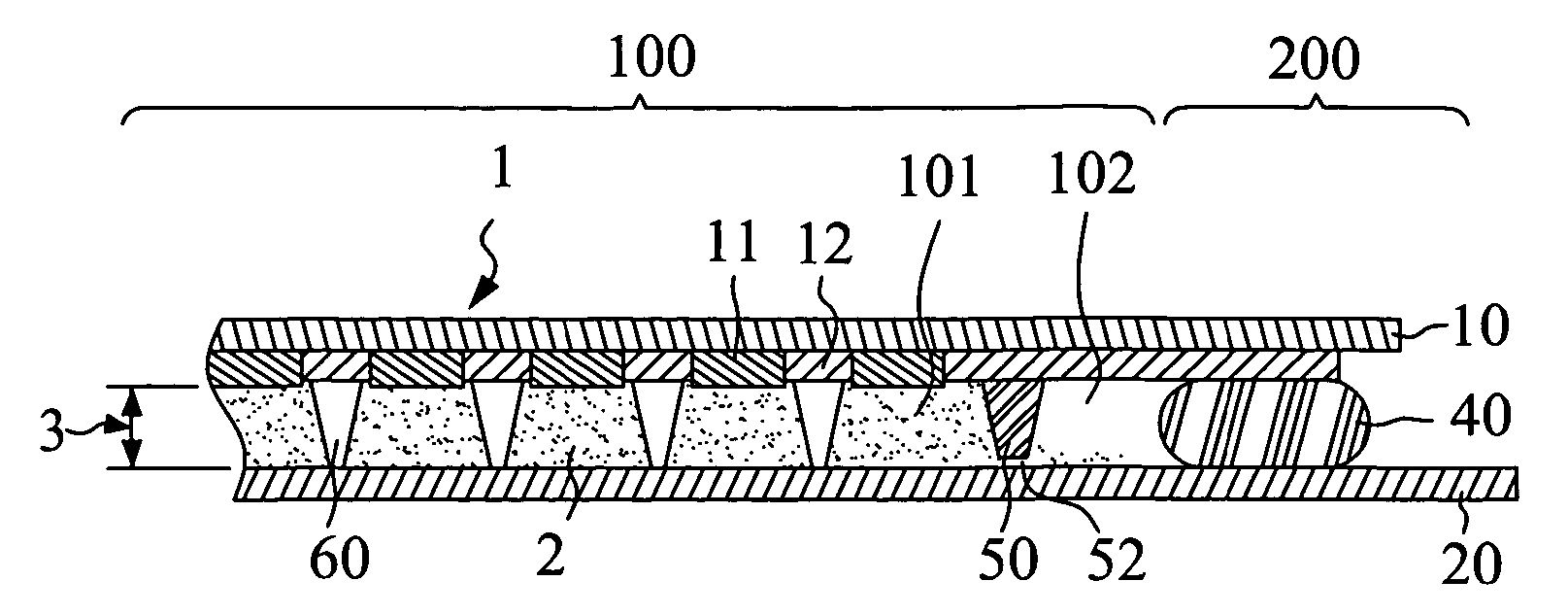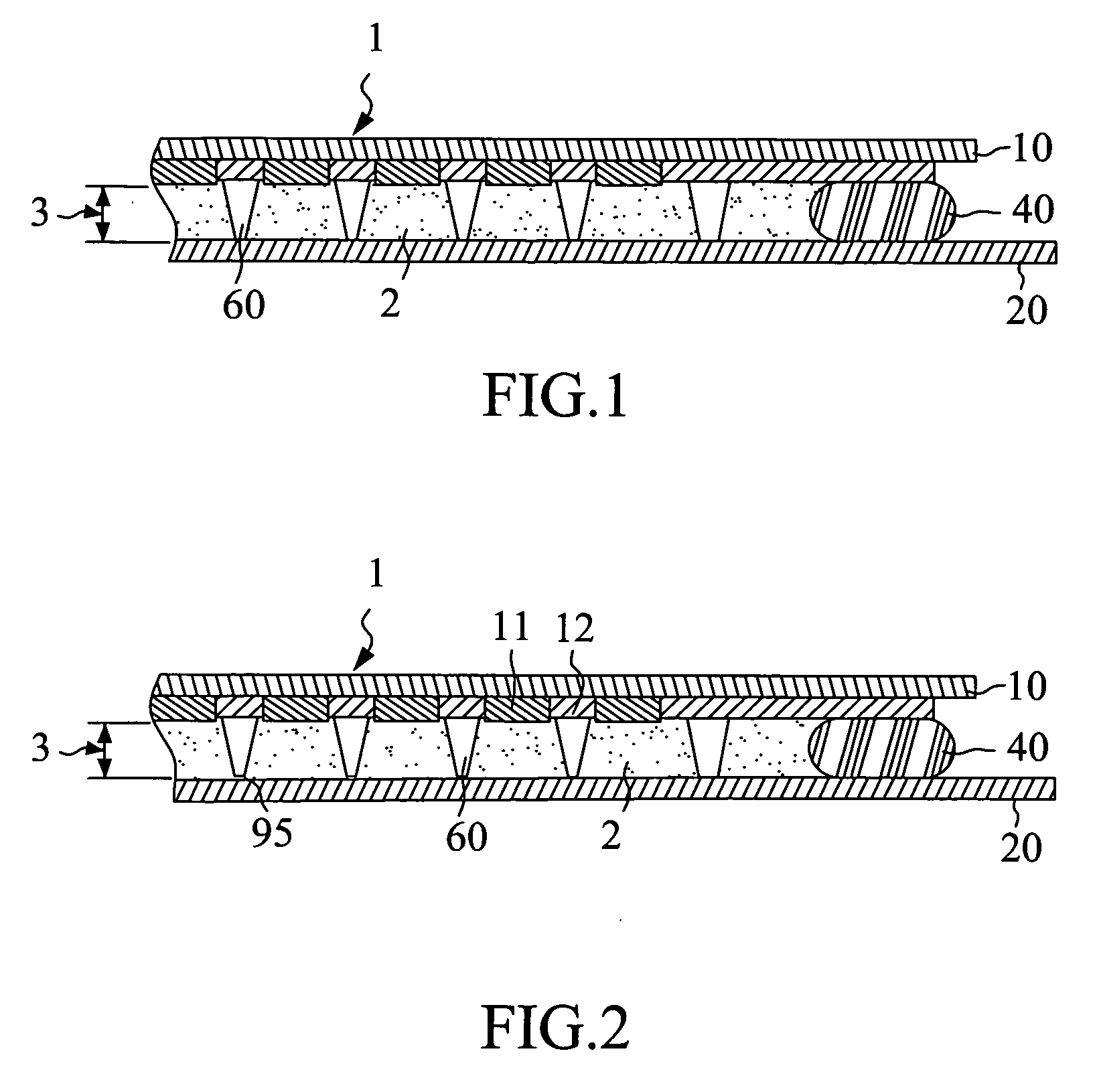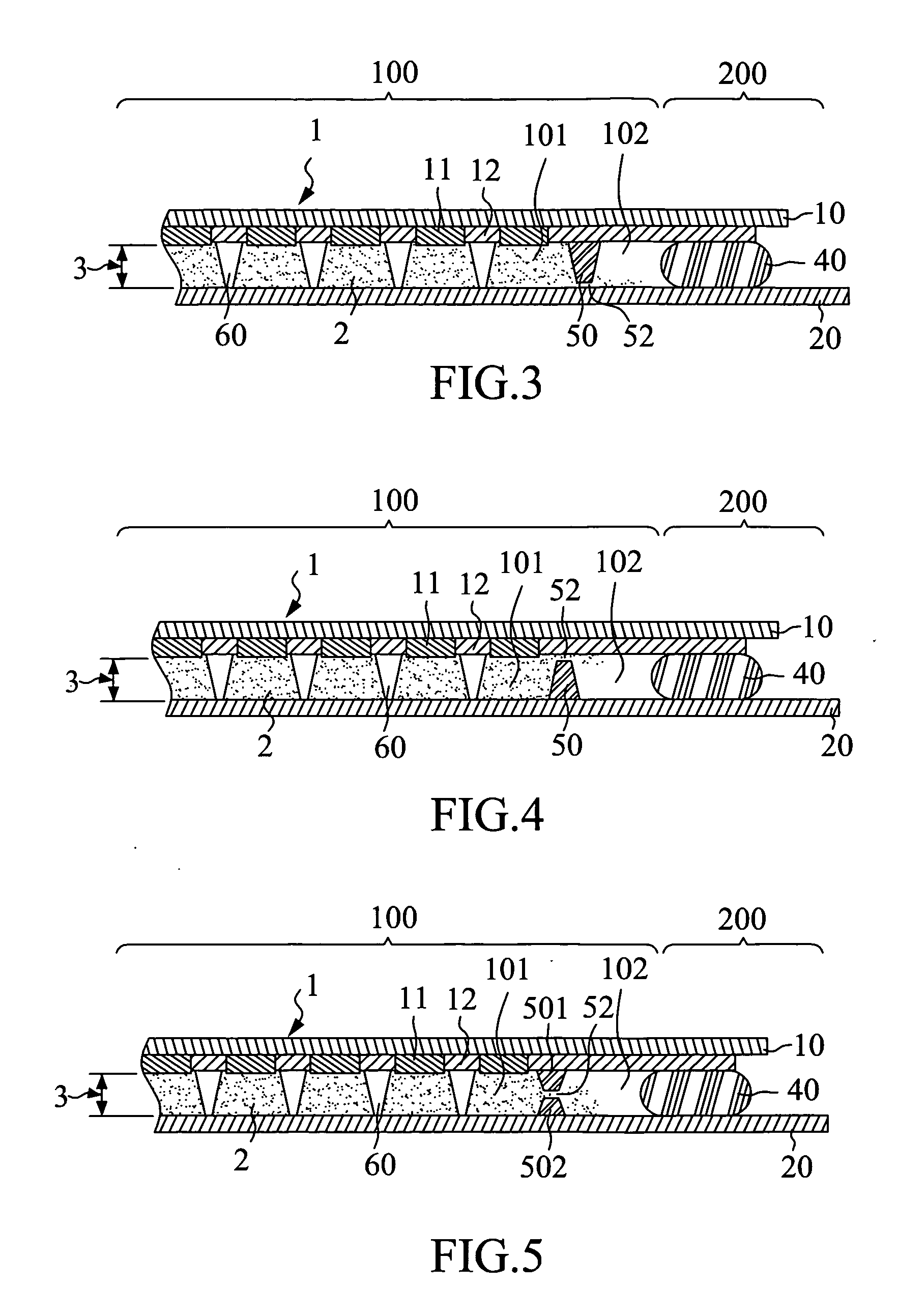Liquid crystal display device
a liquid crystal display and display device technology, applied in non-linear optics, instruments, optics, etc., can solve the problems of increasing the cost of manufacturing liquid crystal display devices, increasing the amount of liquid crystal wasted during the liquid crystal injection process, and difficulty in dropping adequate amount of liquid crystal, so as to prevent undesirable gravity mura phenomenon, reduce the viscosity of liquid crystal, and prevent undesirable gravity mura
- Summary
- Abstract
- Description
- Claims
- Application Information
AI Technical Summary
Benefits of technology
Problems solved by technology
Method used
Image
Examples
Embodiment Construction
[0029] Please refer to FIG. 3, which is a cross section view of the liquid crystal display device of the first preferred embodiment of the present invention. The rampart 50 and the sealing member 40 are formed on the upper surface of the lower substrate 20. The sealing member 40 divides the space between the upper substrate 10 and the lower substrate 20 into a center region 100 and a peripheral region 200, while the rampart 50 divides the center region 100 into a display region 101 and a buffer region 102. The sealing member 40 seals the center region 100 and the liquid crystal is filled inside the display region 101. A plurality of pigment layers 11, a plurality of shielding layers 12, a plurality of spacers 60 and at least one rampart 50 are formed on a surface of the upper substrate 10. The pigment layers 11 are color filter sheets and the shielding layers 12 are black matrices, while the spacers 60 are formed inside the display region 101. Since the rampart 50 and the spacers 60...
PUM
| Property | Measurement | Unit |
|---|---|---|
| height | aaaaa | aaaaa |
| heights | aaaaa | aaaaa |
| pressure | aaaaa | aaaaa |
Abstract
Description
Claims
Application Information
 Login to View More
Login to View More - R&D
- Intellectual Property
- Life Sciences
- Materials
- Tech Scout
- Unparalleled Data Quality
- Higher Quality Content
- 60% Fewer Hallucinations
Browse by: Latest US Patents, China's latest patents, Technical Efficacy Thesaurus, Application Domain, Technology Topic, Popular Technical Reports.
© 2025 PatSnap. All rights reserved.Legal|Privacy policy|Modern Slavery Act Transparency Statement|Sitemap|About US| Contact US: help@patsnap.com



